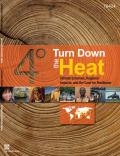This policy brief reviews the challenges of African urbanization as well as opportunities for sustainable development in the region. It notes that making urban areas green, inclusive, and resilient is part of the agenda for cities to be successful in the short and medium term. To acheive this, the policy brief notes that there must be: i) a clear vision; ii) coordination between city and national policies; iii) planning and integration of policies; and iv) learning from others. The brief concludes that part of the challenge of the coming decade is how to manage urbanization well by capturing long-term benefits without incurring unnecessary long-term costs. Pursuing a sensible green growth strategy is part of the solution.
This paper addresses the issues of urbanisation and green growth in Africa from the perspective of what it would take for African cities and countries to accommodate the upcoming urban explosion without the usual negative impact on the physical environment, and using it as an opportunity for innovative and green growth. The paper is organised in four parts. Part I reviews the performance of the African region, economic growth, urban expansion and the characteristics of the urbanisation process. Part II suggests a framework to discuss green growth at city level. It focuses on sectors normally under city responsibility (land, buildings, waste, urban transport) and reviews the use of public policies, including regulation, pricing, tax and investment criteria. Part III discusses combinations of policies for African cities at different stages of urbanisation and urban growth. Part IV summarises the key points for a forward-looking policy agenda. The reports draws on literature produced on Green Economy by UNEP, the World Bank, OECD, African Development Bank and provides relevant examples from Africa and cities in the world.

This report focuses on the risks of climate change to development in Sub-Saharan Africa, South East Asia and South Asia. Building on the 2012 report, Turn Down the Heat: Why a 4°C Warmer World Must be Avoided, this new scientific analysis examines the likely impacts of present day, 2°C and 4°C warming on agricultural production, water resources, and coastal vulnerability for affected populations. It finds many significant climate and development impacts are already being felt in some regions, and in some cases multiple threats of increasing extreme heat waves, sea level rise, more severe storms, droughts and floods are expected to have further severe negative implications for the poorest. Climate related extreme events could push households below the poverty trap threshold. High temperature extremes appear likely to affect yields of rice, wheat, maize and other important crops, adversely affecting food security. Promoting economic growth and the eradication of poverty and inequality will thus be an increasingly challenging task under future climate change.

This paper provides key information about the North American natural products market with a special focus on selected South American and African products. Natural products in the North American market have experienced strong market growth in the last decade as consumers increasingly demand nutritional and cosmetic products derived from natural sources. This paper provides an overview of the market including a description of products, prices and distribution channels, as well as requirements for access in terms of regulations, standards, product presentation and application forms.
This paper explores the value of green growth from the perspective of sustainable development practitioners. First, it provides a brief definition of green growth, and why the concept is relevant for meeting Africa’s challenges. It then discusses how green growth can be achieved, highlighting some of the primary tools for achieving it, and then discussing focal areas that we believe will have the greatest impacts by spurring growth sustainably. Finally, it discusses how the AfDB has promoted green growth through its own initiatives. Boxes throughout the paper provide examples of the AfDB’s promotion of green growth in its project portfolio.
